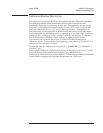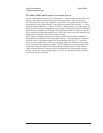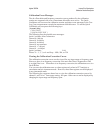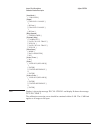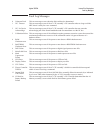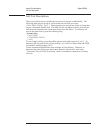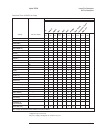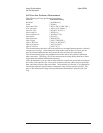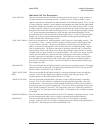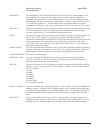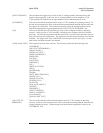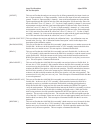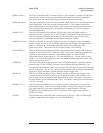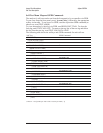
Individual Self-Test Descriptions
[ AAF BYPASS ] This test verifies that the anti-alias filters and the bypass circuits on the A1 Input assembly or
A2 Input assemblies are operating correctly. In this test, the A5 Analog assembly’s source
outputs a signal that is connected to the input channels via the calibration path (CALP). For the
A1 Input assembly’s channel 1, power spectrum measurements are made with the signal routed
through the 100 kHz anti-alias filter, the 50 kHz anti-alias filter, and the bypass circuit. For the
A1 Input assembly’s channel 2, power spectrum measurements are made with the signal routed
through the 50 kHz anti-alias filter and the bypass circuit. For the A2 Input assembly’s channel
1 or 2, power spectrum measurements are made with the signal routed through the 50 kHz
anti-alias filter, the 25 kHz anti-alias filter, and the bypass circuit. For the A2 Input assembly’s
channel 3 or 4, power spectrum measurements are made with the signal routed through the
25 kHz anti-alias filter and the bypass circuit.
[ ADC GATE ARRAY ] This test verifies that the A5 Analog assembly’s ADC gate array is functioning correctly. This
test consists of 7 tests — positive overflow, negative overflow, positive limit, negative limit,
1st pass, 2nd pass, and zero. The positive and negative overflow tests set up the ADC test
mode to cause positive and negative overflows, then check the A6 Digital assembly’s digital
filter for interrupt flags. The positive and negative limit tests check the ADC’s positive and
negative limits. The 1st and 2nd pass tests connect the calibration signal from the A5 Analog
assembly to the A1 Input assembly or A2 Input assemblies. The 1st pass test sets the 2nd pass
result to zero and checks the signal into the ADC for the proper value and the A6 Digital
assembly’s gate array for interrupts or overloads. The 2nd pass test sets the 1st pass result to
zero and checks the signal into the ADC for the proper value and the A6 Digital assembly’s
gate array for interrupts or overloads. The zero test checks for minimal output while the gate
array outputs zero data.
[ BASEBAND ] This test verifies that the A6 Digital assembly’s gate arrays are operating correctly. The trigger
gate array provides dc input data. The signal is then measured at 0 Hz for 63.58 Vpk ±0.635V
and from 4 Hz to 1.6 kHz for 0 Vpk ±0.06358V.
[ DGTL SRCE THRU
DSP ]
This test verifies that the A6 Digital assembly’s gate arrays and digital source are operating
correctly. In this test, the digital source outputs a periodic chirp to the gate arrays. The
resultant spectrum is then checked from 384 Hz to 51.2 kHz.
[ DIGITAL FILTER ] This test verifies that the digital filter’s gate array on the A6 Digital assembly is operating
correctly. The A7 CPU assembly’s microprocessor configures the digital filter’s gate array
over the fast bus. The microprocessor then reads the control lines to check circuits internal to
the gate array and verify correct configuration. This test also writes to and reads from the gate
array’s RAM, checking for stuck bits. The Trigger Gate Array test [ TRIGGER ] and the LO
Gate Array test [ LO ] must pass for this test to pass. No data paths on the A6 Digital assembly
are checked.
[ DISK CONTROLLR ] This test verifies that the disk controller on the A7 CPU assembly is operating correctly. In this
test, the microprocessor sends a series of writes to and reads from the disk controller.
[ DISK FIFO ] This test verifies that the disk controller’s FIFO on the A7 CPU assembly is operating
correctly. In this test, the CPU assembly’s microprocessor writes 2048 pseudo-random bytes to
the disk FIFO. The microprocessor then reads the disk FIFO.
Agilent 35670A Internal Test Descriptions
Self-Test Descriptions
10-13



